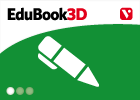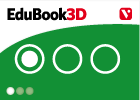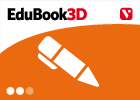Cargando...
Recursos educativos
-
Nivel educativo
-
Competencias
-
Tipología
-
Idioma
-
Tipo de medio
-
Tipo de actividad
-
Destinatarios
-
Tipo de audiencia
-
Creador
Lo más buscado
- Gremios edad media
- fábulas para niños
- Experimentos de acústica
- Oraciones impersonales
- Cuerpo humano
- Tintín
- Comunidades de España
- Actividades ángulos primaria
- Música moderna
- Aprender a sumar
- Patrimonio industrial
- Múltiplos de 4
- Actividades de comprensión lectora primaria para imprimir
- Aprender los números
- Guía de consumo responsable
-

Everyday life in the cities
EduBook Organización
- 2885 visitas
3.1. Roman houses There were two types of houses in Roman cities: the domus and the insula. Domus were individual houses of wealthy families. The entrance was a vestibule that led to an interior patio…
-

-

The 19th century industrial city - The industrialisation of European soc...
EduBook Organización
- 2712 visitas
Industrial society in the 19th century was centered in cities. The factories were located on large sites and with them, labour, services and transportation. Large urban industrial nuclei were born. Many…
-

True/false. The main characteristics of the Iberians
EduBook Organización
- 2683 visitas
Decide if the following statements are true or false: The Iberians lived in the southern and eastern part of the Iberian Peninsula. ➝ The Iberians were very skilled craftsmen. ➝ The Iberians lived…
-

Everyday life in Athens
EduBook Organización
- 2682 visitas
4.1. Everyday life in Athens Like most Greek cities, Athens was surrounded by walls and had narrow streets. There were no sewers, water was scarce and no one collected the rubbish. The streets were full…
-

Observe. Egyptian tombs
EduBook Organización
- 2632 visitas
Look at the three types of Egyptian tomb and do the activities: Explain the differences between a mastaba, a pyramid and a hypogeum. What was the function of each construction? Where is the sarcophogus…
-

Blood circulation (II)
EduBook Organización
- 2613 visitas
The heart The heart is the organ that pumps blood to all the cells in our body. It is about the size of a closed fist. Its walls are made of muscle tissue. The heart contains four chambers: The two top…
-

Choose. Romanesque architecture
EduBook Organización
- 2591 visitas
Match the concept with the following definitions: Area of the church that corresponds to the arms of a cross design. Place where the two arms of the Lain cross design intersect. Structures resting on…
-

Analyse. A text
EduBook Organización
- 2277 visitas
Analyse a text: Igloos Igloos were houses used by Eskimos during winter. They were built using large blocks of ice that were cut from the ground. The blocks were then put into place in a spiral to give…
-

Romanesque art
EduBook Organización
- 2259 visitas
5.1. Architecture: religious art Romanesque art developed in Europe between the 11th and 13th centuries. Most Romanesque works of art are religious. This shows the huge importance of religion in…
Te estamos redirigiendo a la ficha del libro...












